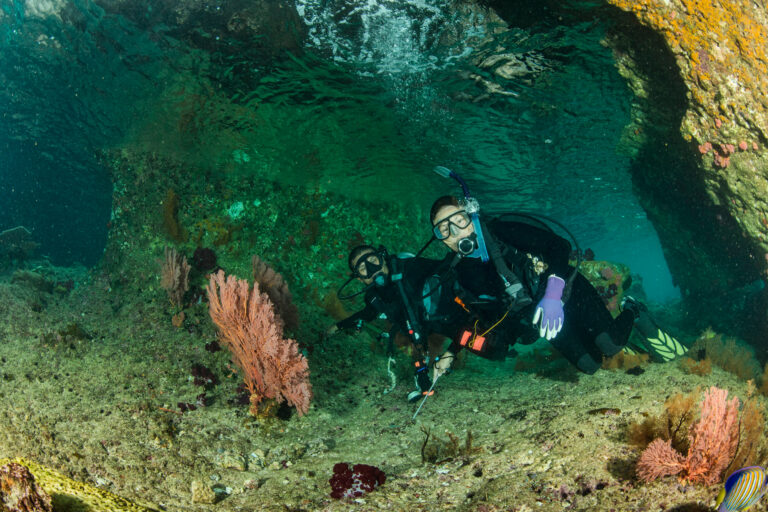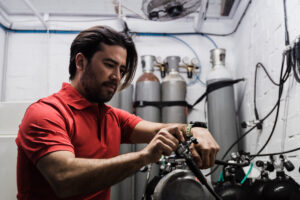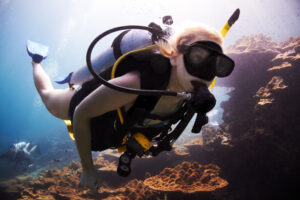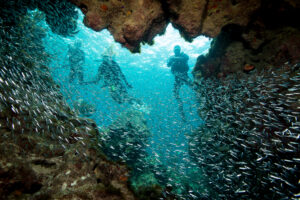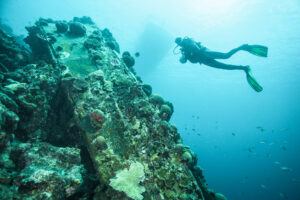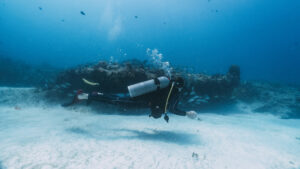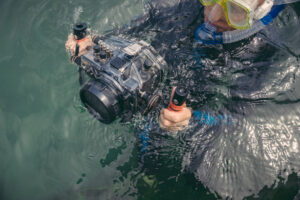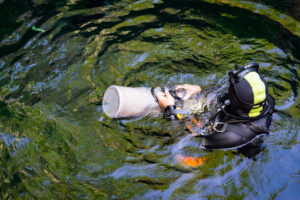What is Hydreliox?
Hydreliox is a specialized breathing gas mixture composed of hydrogen, helium, and oxygen. It is primarily used in the field of deep-sea diving to enable divers to reach extreme depths that would otherwise be unmanageable with conventional air or other gas mixtures. Hydreliox has become crucial in extending the operational limits of human divers, allowing them to explore and work in underwater environments that present significant physiological challenges.
Historical Development
The development of Hydreliox as a breathing gas for deep-sea diving has its roots in the quest to overcome the limitations of traditional air and other gas mixtures used in diving. Early attempts to push the boundaries of deep-sea diving faced numerous challenges, including nitrogen narcosis and oxygen toxicity. These issues spurred researchers and diving organizations to seek alternative solutions that could mitigate these risks.
In the mid-20th century, the advent of helium-oxygen mixtures (Heliox) marked a significant milestone. Helium, being less narcotic than nitrogen, allowed divers to go deeper without experiencing the debilitating effects of narcosis. However, as divers ventured deeper, they encountered the high-pressure nervous syndrome (HPNS), a condition that affects the nervous system at great depths. This condition prompted further investigation into gas mixtures that could help manage HPNS.
Hydreliox emerged as a promising solution through the pioneering work of organizations such as COMEX (Compagnie Maritime d’Expertises) and other deep-sea diving research institutions. By incorporating hydrogen into the gas mixture, researchers found that it could mitigate some of the effects of HPNS. Hydrogen, when combined with helium and oxygen, provided a breathing gas that enabled divers to reach unprecedented depths safely.
Physical and Chemical Properties
Hydreliox is composed of hydrogen, helium, and oxygen in specific proportions tailored to the requirements of deep-sea diving. The typical composition might include a significant percentage of helium, a smaller percentage of hydrogen, and a carefully controlled amount of oxygen to ensure safe respiration. The exact ratios can vary depending on the depth and specific diving conditions.
The inclusion of hydrogen in the mixture plays a crucial role in reducing the narcotic effects that divers experience at great depths. Hydrogen has a lower narcotic potency than nitrogen, making it a suitable replacement in deep diving scenarios. Additionally, hydrogen’s thermal conductivity helps in managing body temperature, which is essential in the cold environments typically encountered during deep-sea operations.
Despite its benefits, hydrogen is a flammable gas, and its use in breathing mixtures requires stringent safety protocols. The risk of fire or explosion must be meticulously managed, particularly in enclosed or pressurized environments. This necessitates specialized equipment and procedures to ensure the safety of divers using Hydreliox.
Applications in Scuba Diving
Hydreliox is primarily used in deep-sea diving operations, where divers need to operate at depths exceeding the safe limits of other breathing gas mixtures. These operations often include scientific research, underwater construction, and salvage missions that require extended time at depth. Hydreliox allows divers to work efficiently in these challenging environments without the debilitating effects of nitrogen narcosis or severe oxygen toxicity.
Compared to other breathing gas mixtures like Trimix (which includes nitrogen, helium, and oxygen) and Heliox (helium and oxygen), Hydreliox offers distinct advantages at extreme depths. The presence of hydrogen helps in mitigating HPNS, which can become a significant concern beyond depths of approximately 200 meters (656 feet). This makes Hydreliox particularly valuable for dives that reach or exceed these depths.
Using Hydreliox requires extensive training and strict adherence to safety protocols. Divers must be well-versed in the properties of the gas mixture and the potential risks associated with hydrogen. Specialized diving equipment, including rebreathers designed for Hydreliox, is also necessary to ensure the safe and effective use of this gas mixture. This equipment helps to manage the precise delivery of the gas mixture and monitor the diver’s physiological responses.
Physiological Impacts
Breathing Hydreliox at great depths has significant physiological effects on the human body. One of the primary benefits is the reduction in the narcotic effects experienced with nitrogen. Nitrogen narcosis can impair cognitive and motor functions, posing a serious risk to divers. By replacing nitrogen with hydrogen, Hydreliox allows divers to maintain better mental clarity and physical coordination at depth.
Hydreliox also addresses the issue of oxygen toxicity, which becomes a concern at high partial pressures of oxygen. The controlled amount of oxygen in Hydreliox ensures that divers receive sufficient oxygen for respiration without reaching toxic levels. This balance is critical in preventing symptoms such as convulsions and other serious health issues associated with oxygen toxicity.
High-pressure nervous syndrome (HPNS) is another significant concern for deep-sea divers. HPNS can cause tremors, dizziness, and other neurological symptoms, making it challenging to perform tasks at depth. The inclusion of hydrogen in Hydreliox has been found to mitigate some of the effects of HPNS, enabling divers to operate more effectively at extreme depths. However, divers must still be monitored closely for any signs of HPNS and other physiological issues during deep dives.
Challenges and Limitations
Despite its advantages, the use of Hydreliox presents several challenges and limitations. One of the primary challenges is the flammability of hydrogen, which requires careful handling and stringent safety measures. Specialized equipment is needed to mix, store, and deliver Hydreliox, and divers must undergo extensive training to understand the risks and proper procedures.
Logistically, preparing and transporting Hydreliox can be complex and costly. The gas mixture must be precisely calibrated for each dive, taking into account the specific depth and duration of the dive. This requires sophisticated technology and highly skilled technicians. Additionally, the storage and transportation of hydrogen and helium can be challenging, particularly in remote or harsh environments.
The use of Hydreliox is also limited by environmental conditions. Extremely cold temperatures at great depths can affect both the gas mixture and the diver’s equipment. Managing body temperature becomes crucial, as hypothermia can quickly set in. The thermal properties of hydrogen can help in this regard, but divers must still be equipped with proper thermal protection.
Finally, the depth and duration limitations of Hydreliox must be carefully considered. While it allows for deeper and longer dives than other gas mixtures, there are still practical limits to its use. Divers must plan their dives meticulously to avoid decompression sickness and other complications associated with prolonged exposure to high-pressure environments.
Economic and Environmental Considerations
Using Hydreliox in deep-sea diving operations comes with significant economic considerations. The production and preparation of this specialized gas mixture are more costly than traditional air or other gas mixtures like Nitrox or Heliox. The need for specialized equipment and training further adds to the overall cost. Organizations that employ Hydreliox must weigh these costs against the benefits of enabling deeper and safer dives.
In terms of environmental impact, the production of hydrogen and helium must be taken into account. Helium, in particular, is a finite resource, and its extraction and use have environmental implications. Efforts to recycle and conserve helium are important to mitigate its environmental footprint. Additionally, the handling and transportation of hydrogen require careful planning to prevent any potential hazards or environmental contamination.
Despite these considerations, the benefits of Hydreliox in enabling deep-sea exploration and work often justify the costs. The ability to reach and operate at depths that would otherwise be inaccessible can provide valuable scientific, commercial, and operational advantages.
Key Takeaways
Hydreliox, a mixture of hydrogen, helium, and oxygen, has revolutionized deep-sea diving by enabling divers to reach unprecedented depths safely. Its development addressed significant challenges such as nitrogen narcosis, oxygen toxicity, and high-pressure nervous syndrome. While its use comes with economic and logistical challenges, the benefits of deeper and safer dives often outweigh these considerations.

